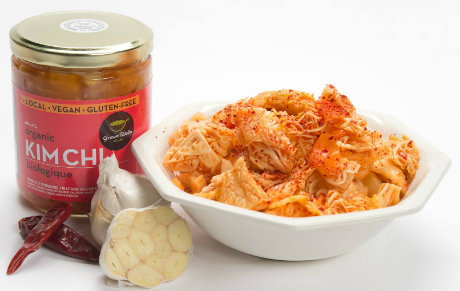Josh Whitehead says the business came about through happenstance; he’s been making kimchi for about 25 years simply because he likes it. “The business grew organically. Our product line is designed around produce we can get within Ontario.” The final product is reflective of local and or Canadian agri-food inputs.
Customers are no longer shaking their heads at just exactly what products Green Table Foods is producing. “There’s been a huge shift. When we first started making kimchi very few people understood what it was," he says.

They’re currently receiving shipments of spring cabbage, but they also have access to year-round vegetables like organic carrots and beets. “A decade ago there was no continuity of supply,” says Whitehead. “It all disappeared in the winter or was shipped elsewhere. We’re getting certified organic Ontario beets 12 months a year, as well as carrots and onions.” Radishes are also used, but there is a two-month gap of availability.
It’s dawned on him over the past few years that the reason consumers don’t see a lot of small grass root business product in grocery stores or major sales channels because is because of regulations and requirements for shelf life or SAP codes. ‘It can be quite onerous for a small-scale processor,” he says. He shouldered through though and has gotten shelf space at hundreds of retailers, including Shopper’s Drug Mart and Sobeys in Quebec. “To connect the dots for getting into a major store like Loblaw’s can seem to be nearly impossible—at first— for a little guy.” Green Table Foods’ shelf life is such that it can be shipped out of province to retailers who are diversifying their offerings to help stand out from the major grocery chains, and is on trend with demands for clean labels, bold flavours, and healthier options.
It took the company about a year and a half to get into Whole Foods. “There’s a lot of persistence involved,” he says. “Distribution, we’ve discovered, is a business that at first seems straightforward, but there are logistical and warehousing elements we don’t have the capacity to do. Having a great product is just one piece of the puzzle. Being consistent and easy to work with is important, but we have had great help from our distribution partners to help build relationships, secure listings, and then to support us at the store level. The outcome is that we have had strong, sustainable growth over a number of years that benefits everyone along the value chain, most especially our customers.”





